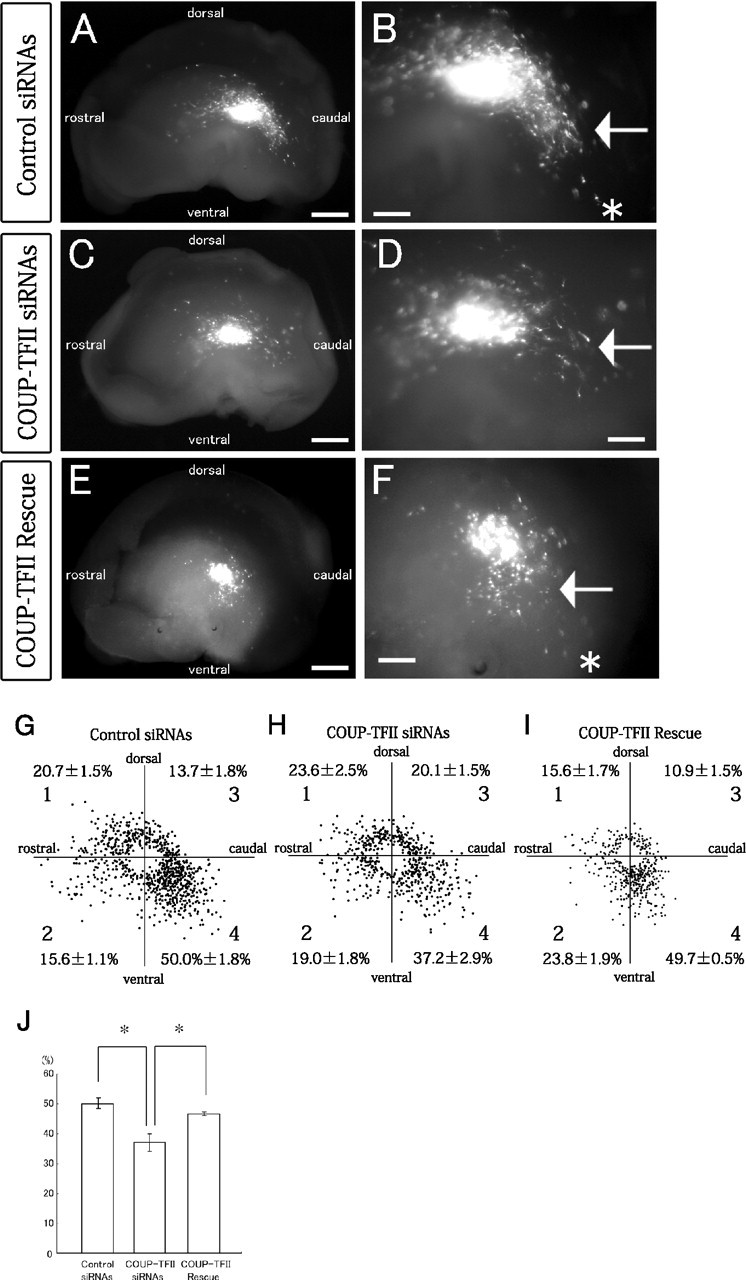Figure 4.

COUP-TFII is necessary for the formation of the caudal migratory stream. A–F, Knockdown and rescue of COUP-TFII in homotopic transplants of CGE cells into the CGE. Median view of the hemispheres. COUP-TFII siRNAs (C, D), control siRNAs (A, B), or the COUP-TFII siRNAs plus a COUP-TFII-expression vector (E, F) were introduced into the mouse E13.5 CGE together with a DsRed-Express vector, and small fragments of the transfected CGE were transplanted into the CGE of other E13.5 telencephalic hemispheres. The hemispheres were then cultured for 40–42 h. A, B, A number of transplanted control cells migrated caudally (indicated by the arrow in B) toward the caudal end (asterisk in B). C, D, When COUP-TFII siRNAs were introduced into the transplanted CGE cells, formation of the CMS was significantly inhibited (indicated by an arrow in D). E, F, When COUP-TFII siRNAs and a COUP-TFII-expression vector were cointroduced into the transplanted CGE cells, formation of the CMS was significantly rescued (indicated by an arrow in F), and many transplanted cells migrated caudally toward the caudal end (asterisk in F). B, D, F, Higher magnifications of A, C, E, respectively. G–I, Distribution of the transplanted control CGE cells (G), COUP-TFII siRNA-electroporated CGE cells (H), and COUP-TFII-rescued CGE cells (I) in the GE after 40–42 h in vitro. Each dot represents one cell. The number of migrating cells in each of the four sectors was counted (average ± SE [%]; 6 independent experiments for the control and COUP-TFII siRNAs, and 5 independent experiments for COUP-TFII rescue). J, Calculation of the percentages of transplanted cells in sector 4. In sector 4, the percentage (±SE) of COUP-TFII siRNA-transfected CGE cells was significantly smaller than the percentage of transplanted control CGE cells (*p = 0.0013) and of COUP-TFII-rescued CGE cells (*p = 0.0039). Scale bars: A, C, E, 500 μm; B, D, F, 200 μm.
